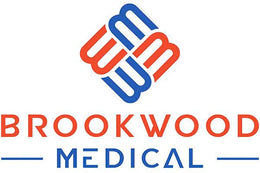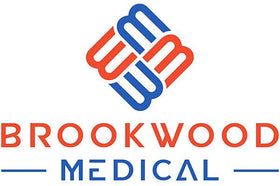Your Essential Guide to Mask Hygiene: Stay Safe and Clean

Frequently Asked Questions
1. Why is mask hygiene important?
2. How should I care for disposable face masks for toddlers?
3. When should I replace a disposable mask?
4. What are the best practices for washing fabric masks?
5. How can I educate my children about mask hygiene?
As we navigate through challenging times, wearing masks has become a norm in our daily lives. Particularly for parents, ensuring that their little ones are protected is a top priority. When it comes to choosing the right protection, disposable face masks for toddlers have gained popularity due to their practicality and ease of use. However, maintaining mask hygiene is just as crucial as wearing them correctly. In this guide, we will explore the best practices for keeping masks clean and effective for you and your family.
Understanding Mask Hygiene
Mask hygiene refers to the practices involved in keeping your masks clean and effective in preventing the spread of germs. Whether you use reusable fabric masks or disposable face masks for toddlers, understanding the principles of hygiene can significantly improve safety and effectiveness.
The Importance of Keeping Masks Clean
Wearing a mask that is contaminated can do more harm than good. Here are a few reasons why mask hygiene matters:
- Prevention of Germ Spread: Dirty masks can harbor pathogens that may contribute to the spread of illness.
- Increased Protection: A clean mask works effectively to filter out viruses and bacteria, offering better protection.
- Comfort: A hygienic mask worn for long periods is less likely to cause irritation or discomfort to the skin.
How to Care for Disposable Face Masks
When it comes to disposable face masks for toddlers, it’s essential to know their specific care instructions. Unlike reusable masks, disposable masks should only be used once and discarded properly.
Proper Usage of Disposable Masks
To maximize the effectiveness of disposable masks, follow these guidelines:
- Check for Damage: Before wearing a disposable mask, check for tears or damages that may compromise its protective abilities.
- Correct Placement: Ensure the mask covers the nose and chin completely, providing a snug fit against the sides of the face.
- Avoid Touching the Mask: Try to avoid touching the fabric of the mask while wearing it, as this can transfer germs from your hands to your face.
When to Replace Disposable Masks
Knowing when to dispose of a mask is critical. Consider replacing a disposable mask:
- After a single use, especially if it becomes damp.
- If it becomes visibly soiled or damaged.
- If your child has worn it for an extended period and it may have accumulated pathogens.
Fabric Mask Hygiene
For families opting for fabric masks, understanding the necessary steps for cleaning and maintenance is vital. Here are some essential practices:
Washing Your Fabric Masks
Regular washing is a crucial aspect of maintaining fabric masks. Here are some tips:
- Washing Frequency: It’s best to wash fabric masks after daily use or if they become damp.
- Machine Wash or Hand Wash: Use hot water and detergent. If washing by hand, soak in warm soapy water, rinse thoroughly, and let air dry.
- Drying: Ensure masks are completely dry before wearing them again to prevent any moisture-related bacteria growth.
Storage of Fabric Masks
Proper storage is just as important as cleaning. Here’s how to store your fabric masks:
- Keep in a Clean Area: Store masks in a clean, dry place away from pollution and potential contaminants.
- Use a Specific Container: Consider using a separate container or bag for clean masks to maintain hygiene.
- Separate Dirty Masks: Keep used masks in a breathable bag until they can be washed.
Educating Children about Mask Hygiene
Teaching children the importance of mask hygiene is crucial, especially when using disposable face masks for toddlers. Here are some tips for parents:
Implementing Engaging Learning Techniques
Kids respond better to engaging education, so consider using these strategies:
- Storytelling: Create stories or scenarios where characters use masks to demonstrate incidents of mask hygiene.
- Interactive Games: Use games or fun quizzes to help kids learn about the importance of masks and hygiene.
- Hands-On Practice: Allow children to practice putting on and taking off their masks properly with supervision.
Best Practices for Kids
Developing routines around mask hygiene for children can be beneficial:
- Encourage them to wash their hands before and after wearing their masks.
- Make it a habit for kids to check their masks for cleanliness before wearing them.
- Teach them to recognize when a mask should be swapped out for a new one.
Maintaining Mask Hygiene While on the Go
Life can be busy, and maintaining mask hygiene while out and about is essential. Here are some tips to keep your masks safe and clean:
Travel Tips for Keeping Masks Clean
Essentials to keep in mind while traveling include:
- Carry Extras: Always carry extra disposable masks for toddlers or additional fabric masks in your bag for unexpected situations.
- Designate a Clean Storage Area: Have a separate section in your bag for clean masks to avoid cross-contamination with other items.
- Disposal Bags: Pack disposable bags for used masks when on the go to ensure safe disposal.
Communicating Mask Protocols
When in public spaces, communicate mask protocols with your family. Share the importance of wearing masks and following safety guidelines:
- Discuss why maintaining proper mask hygiene is crucial for everyone’s safety.
- Explain the importance of social distancing even while wearing masks.
- Encourage regular breaks in a safe environment to manage comfort without compromising safety.
Staying Up-to-Date on Guidelines
Mask guidelines and safety protocols may evolve. Stay informed about local health guidelines and modifications to mask recommendations. This knowledge can enhance your family’s health security.
Resources for Current Guidelines
Regularly check reputable sources for updates related to mask safety:
- Health organizations such as the World Health Organization (WHO) and the Centers for Disease Control and Prevention (CDC).
- Your state or local health departments for tailored guidelines relevant to your area.
- Community bulletins and local news outlets that might also offer updates and general advice on mask usage.
Empower Your Family with Knowledge
Maintaining mask hygiene is a shared responsibility that requires understanding and proactive measures. Whether you opt for disposable face masks for toddlers or reusable fabric ones, the strategies outlined above can help you ensure optimal protection for your family. By emphasizing the importance of cleanliness and hygiene, you can empower both children and adults alike to prioritize health and safety amid these changing times.
As you navigate mask hygiene, remember that staying informed and prepared can make all the difference in keeping your loved ones safe. Encourage open discussions about safety protocols within your family, and instill good practices in your children. Together, you can build a culture of health that extends beyond these challenging times.
Discover the creativity of other Shopify or Wix store owners by visiting their stores. Follow this link to their online store. Please remember that this is a promotional link, and we assume no liability for the content of the linked store.






